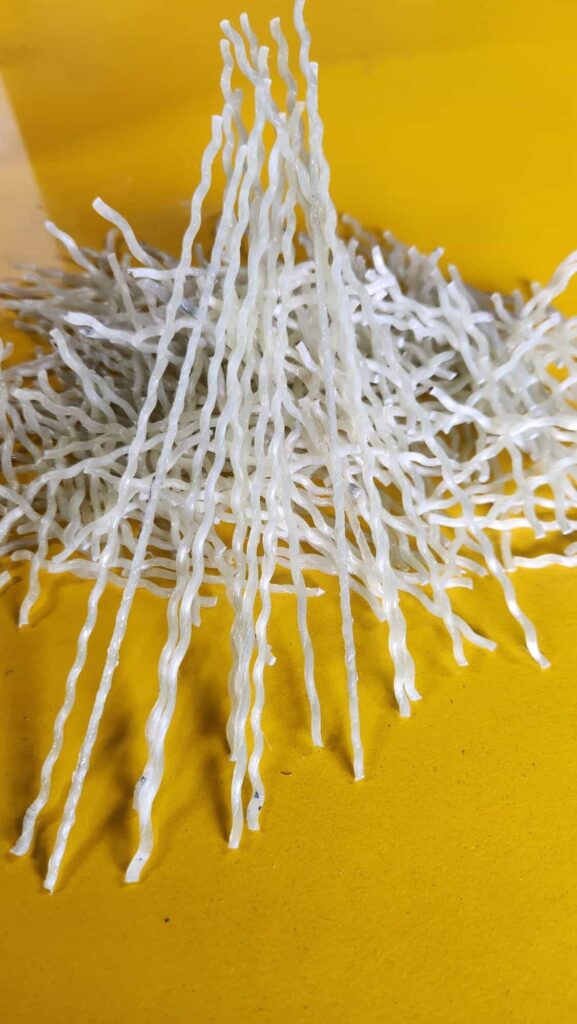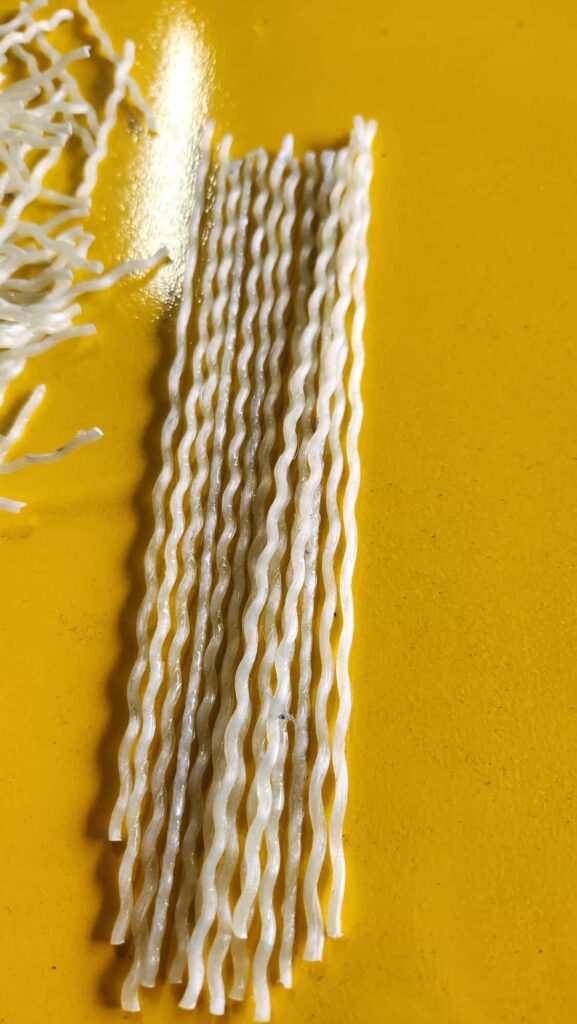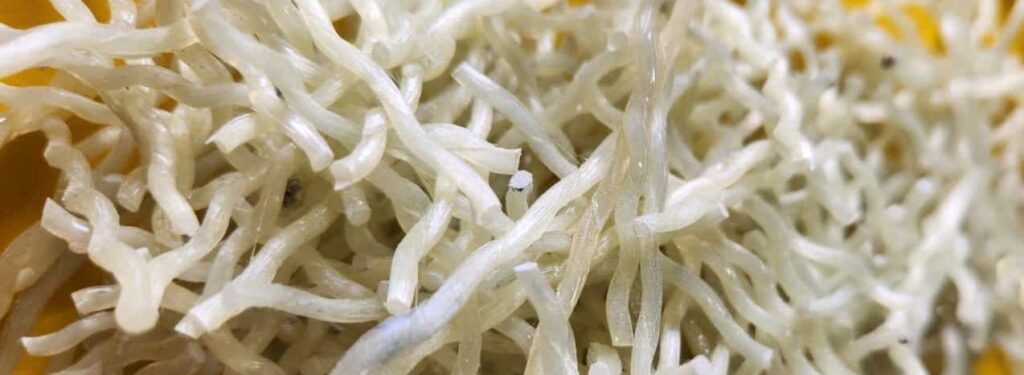Le secteur de la construction exige des matériaux répondant à des normes de performance toujours plus strictes. Pendant longtemps, la fibre d'acier a été la solution de prédilection pour le renforcement du béton, mais des matériaux composites innovants, comme la fibre PRFV (polymère renforcé de fibres de verre), offrent des performances bien supérieures. Dans cet article, nous aborderons les avantages de la fibre PRFV par rapport à la fibre d'acier traditionnelle et présenterons les équipements de pointe développés par Composite-Tech pour sa production.
Points clés à retenir
- La fibre GFRP est un matériau composite fabriqué à partir de fibres de verre noyées dans des résines polymères.
- L'utilisation de la fibre GFRP pour le renforcement du béton ouvre de nouvelles possibilités pour améliorer la qualité et la durabilité des projets de construction.
- Les avantages de la fibre GFRP par rapport à l'acier: résistance supérieure, résistance à la corrosion, poids plus léger et durée de vie prolongée.
- Composite-Tech propose des solutions avancées équipement conçu pour produire de la fibre GFRP de haute qualité.
- Composite-Tech fournit un service complet pour les équipements, y compris l'installation, l'étalonnage, la formation du personnel et l'entretien régulier.
Qu'est-ce que la fibre GFRP ?
Fibre GFRP Il s'agit d'un matériau composite composé de fibres de verre noyées dans des résines polymères. Ces fibres sont incorporées au béton pour en améliorer la résistance, la résistance aux fissures et la durabilité. L'utilisation de la fibre PRFV dans la construction gagne rapidement en popularité grâce à ses propriétés mécaniques exceptionnelles et à sa performance à long terme par rapport aux matériaux traditionnels comme l'acier.
Avantages de la fibre GFRP par rapport à la fibre d'acier
- Résistance à la traction supérieure
La fibre PRFV présente une résistance à la traction de 1 000 à 1 600 MPa, soit plus du double de celle de la fibre d'acier classique, comprise entre 400 et 600 MPa. Cela rend la fibre composite bien plus efficace pour renforcer le béton, notamment dans les applications soumises à de fortes contraintes et à des charges extrêmes. - Résistance à la corrosion
La fibre d'acier est très sensible à la corrosion, notamment dans les environnements humides ou chimiquement agressifs, ce qui compromet sa longévité et sa résistance. En revanche, la fibre PRFV est totalement résistante à la corrosion, ce qui la rend idéale pour les environnements marins, industriels et chimiquement agressifs où l'acier se dégraderait avec le temps. - Léger et facile à manipuler
La fibre PRFV est 4 à 5 fois plus légère que l'acier, avec des performances équivalentes. Cela réduit le poids total des structures en béton et simplifie le transport et l'installation. L'utilisation de fibres composites permet de réduire considérablement les coûts logistiques et de main-d'œuvre. - Résistance chimique
La fibre PRFV résiste aux acides, aux alcalis et aux sels, ce qui garantit sa stabilité dans les environnements chimiquement agressifs. La fibre d'acier, quant à elle, est vulnérable aux attaques chimiques, ce qui réduit la durée de vie des structures en béton armé. - Durée de vie prolongée des structures
Grâce à sa durabilité supérieure, la fibre PRFV peut prolonger de 2 à 3 fois la durée de vie des structures en béton armé par rapport à la fibre d'acier. Elle constitue ainsi un choix économique pour les projets à long terme tels que les ponts, les tunnels et les grandes infrastructures. - Inertie électromagnétique
La fibre GFRP ne conduit pas l'électricité, ce qui la rend idéale pour une utilisation dans les environnements sensibles aux interférences électromagnétiques tels que les centrales électriques, les réseaux de métro et les infrastructures de communication tele. Contrairement à la fibre d'acier, qui peut provoquer des interférences électromagnétiques, la fibre composite ne présente aucun risque pour les équipements sensibles.
PRFV vs. Fibre d'acier : tableau comparatif
| Paramètre | Fibre GFRP | Fibre d'acier |
| Résistance à la traction (MPa) | 1000–1600 | 400–600 |
| Résistance à la corrosion | Complet | Faible |
| Poids | Léger (4 à 5 fois plus léger) | Lourd |
| Résistance chimique | Haut | Faible |
| Conductivité électrique | Non conducteur | Conducteur |
| Longévité structurelle | 2 à 3 fois plus élevé | Réduit dans les environnements corrosifs |
| Coûts d'entretien | Inférieur (pas besoin de remplacement fréquent) | Plus élevé (en raison de la corrosion) |
Équipement pour la fabrication de fibres GFRP
Un aspect essentiel de la production de fibres PRFV est la technologie qui garantit précision et régularité lors de la production. Composite-Tech propose des équipements de pointe conçus pour produire des fibres PRFV de haute qualité, présentant les avantages suivants :
- Rendement de sortie élevé
Nos équipements sont conçus pour assurer une production à grande vitesse avec un minimum de déchets, permettant une capacité de production accrue et des coûts réduits. - Automatisation pour une précision maximale
L'ensemble du processus de production est entièrement automatisé, ce qui minimise les erreurs humaines et garantit une qualité constante des produits. Les opérateurs peuvent surveiller et contrôler la production grâce à des systèmes intégrés, simplifiant ainsi l'utilisation des équipements. - Efficacité énergétique
Les équipements de Composite-Tech sont conçus pour répondre aux normes d'efficacité énergétique modernes, ce qui contribue à réduire la consommation énergétique globale lors de la production de fibres. Ceci est essentiel non seulement pour réduire les coûts d'exploitation, mais aussi pour minimiser l'impact environnemental. - Versatilité
Nos machines peuvent produire non seulement des fibres GFRP standard pour le béton, mais également des fibres de différentes tailles et caractéristiques, les rendant adaptables à diverses exigences de construction. - Service et assistance complets
Composite-Tech assure un service complet pour ses équipements, incluant l'installation, l'étalonnage, la formation du personnel et la maintenance régulière. Cela garantit un fonctionnement optimal et une longue durée de vie des équipements.
Conclusion
L'utilisation de fibres PRFV pour le renforcement du béton ouvre de nouvelles perspectives d'amélioration de la qualité et de la durabilité des projets de construction. Les avantages de la fibre PRFV par rapport à l'acier sont évidents : résistance accrue, résistance à la corrosion, légèreté et durée de vie prolongée. En intégrant la fibre PRFV à vos projets de construction, vous améliorez non seulement les propriétés mécaniques du béton, mais réduisez également considérablement les coûts d'entretien et de remplacement, ce qui en fait le choix idéal pour les projets à court et à long terme.
L'équipement de pointe de Composite-Tech assure une production de fibre PRFV de haute qualité, répondant aux exigences de la construction moderne. Nous sommes fiers de proposer au marché des solutions innovantes qui contribuent à la construction de structures plus sûres, plus durables et plus respectueuses de l'environnement.
Principaux avantages de la fibre GFRP pour le référencement :
- Haute résistance à la traction:Plus de 1600 MPa, offrant un renforcement inégalé pour les structures en béton.
- Résistance à la corrosion:La fibre GFRP offre une protection complète contre la corrosion, garantissant une durabilité à long terme dans les environnements agressifs.
- Léger et polyvalent:Notre fibre GFRP est 4 à 5 fois plus légère que l’acier, ce qui la rend facile à transporter et à installer sur site.
- Production respectueuse de l'environnement:Les équipements de Composite-Tech fonctionnent avec une efficacité énergétique et un minimum de déchets, favorisant ainsi des pratiques de construction durables.
En choisissant la fibre GFRP de Composite-Tech, vous investissez dans l'avenir de la construction : des solutions plus solides, plus légères et plus durables pour le renforcement du béton.




